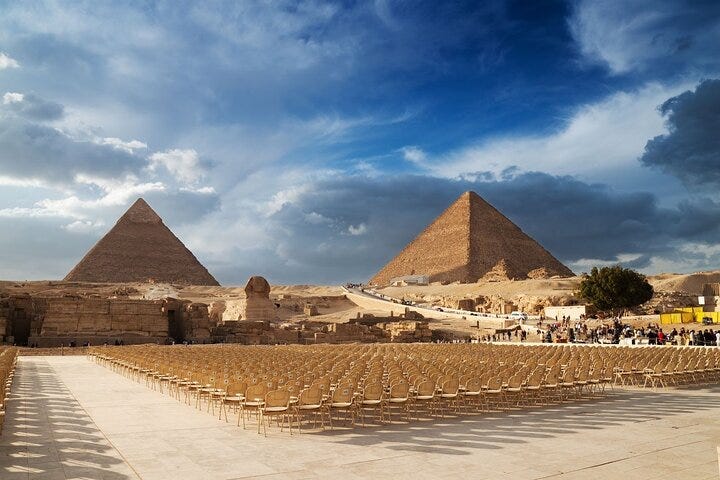Introduction to Antiquities
Antiquities refer to ancient objects and artifacts that hold historical, cultural, or archaeological significance. They provide valuable insights into the civilizations that preceded us, offering a tangible link to our past.
Antiquities encompass a wide range of items, from pottery and tools to manuscripts and coins. Each artifact tells a story of human ingenuity and creativity, making them crucial for understanding our collective heritage.
Types and Categories of Antiquities
Archaeological Antiquities
Archaeological antiquities include tangible artifacts unearthed through excavation. These may range from everyday items like pottery and tools to more elaborate pieces of art and architecture. They provide direct evidence of past human activities and cultural practices.
Pottery
Pottery fragments found at archaeological sites offer clues about ancient manufacturing techniques, trade routes, and even dietary habits.
Tools
Tools such as stone axes or metal implements shed light on early technological advancements and the evolution of craftsmanship.
Historical Antiquities
Historical antiquities encompass documents, manuscripts, and other written records that provide insights into past societies and events.
Ancient Manuscripts
Ancient manuscripts, such as scrolls or codices, are invaluable for understanding ancient languages, literature, and religious practices.
Coins
Coins from different periods offer insights into economic systems, trade routes, and political ideologies of the time.
Significance of Antiquities
Antiquities are not merely relics of the past; they represent our shared cultural heritage and provide tangible links to our ancestors’ lives. By studying antiquities, researchers can reconstruct historical narratives and understand cultural evolution over time.
Preservation and Conservation of Antiquities
Preserving antiquities is crucial to maintain their integrity for future generations. Methods include proper storage, controlled environments, and restoration techniques that respect the original material and craftsmanship.
Studying Antiquities
Studying antiquities involves rigorous archaeological methods and historical research. Archaeologists meticulously excavate sites, document findings, and analyze artifacts using scientific techniques to reconstruct past societies.
Legal and Ethical Issues
Ownership rights and the ethical implications of handling antiquities are complex issues in the field. Illegal excavation and trafficking threaten archaeological sites and cultural heritage, prompting international efforts to regulate and protect antiquities.
Antiquities in Museums
Museums play a vital role in showcasing and interpreting antiquities for the public. Exhibitions not only educate but also inspire curiosity about ancient civilizations and foster cultural appreciation.
Famous Antiquities Sites
Sites like the Pyramids of Egypt, Pompeii, and Machu Picchu are iconic examples of well-preserved antiquities that attract visitors worldwide. These sites offer immersive experiences into ancient cultures and architectural marvels.
Digital Preservation of Antiquities
Advancements in technology allow for the digital preservation of antiquities, creating virtual museums and online archives accessible to global audiences. Digital replicas ensure that even fragile artifacts can be studied and appreciated without physical endangerment.
Educational Programs on Antiquities
Academic institutions offer specialized courses and workshops on antiquities, training future archaeologists and historians in the methods and ethics of studying ancient civilizations.
Antiquities in Popular Culture
Antiquities often capture public imagination, appearing in films, documentaries, and literature. These representations contribute to their cultural significance and inspire further exploration into our past.
Global Perspectives on Antiquities
Different cultures have varying approaches to antiquities, influenced by their historical narratives and contemporary values. International collaborations facilitate the exchange of knowledge and resources for better preservation and research.
Challenges in Antiquities Research
Despite their importance, antiquities research faces challenges such as limited funding, bureaucratic hurdles, and the remote locations of many archaeological sites. Addressing these challenges is crucial for advancing our understanding of human history.
Impact of Climate Change on Antiquities
Climate change poses significant threats to antiquities, from rising sea levels threatening coastal sites to extreme weather events damaging fragile artifacts. Conservation efforts must adapt to mitigate these environmental risks.
Future of Antiquities Studies

The future of antiquities studies is intertwined with technological innovations like 3D scanning, AI analysis, and remote sensing. These tools promise to revolutionize archaeological research, uncovering new discoveries and enhancing our interpretations of the past.
Archaeological Marvels Unveiled
Archaeological antiquities encompass a diverse array of artifacts unearthed from ancient sites worldwide. From the majestic pyramids of Egypt to the intricate pottery of the Indus Valley Civilization, each artifact tells a unique story of craftsmanship and cultural evolution. These discoveries not only enrich our understanding of history but also shed light on societal norms, religious practices, and technological innovations of the past.
Historical Significance and Cultural Heritage
Historical antiquities, such as ancient manuscripts and coins, offer invaluable glimpses into bygone eras. Manuscripts like the Dead Sea Scrolls provide insights into religious beliefs and philosophical thoughts, while ancient coins trace economic systems and trade routes. Preserving these artifacts is not merely about conserving physical objects but safeguarding the heritage and identity of civilizations long gone.
Preserving the Legacy: Conservation and Ethical Concerns
Preserving antiquities involves meticulous conservation efforts to protect fragile artifacts from natural decay and human interference. Techniques range from advanced climate-controlled storage facilities to non-invasive restoration methods that maintain authenticity. However, ethical concerns around the illicit trade of antiquities persist, prompting international efforts to enforce stringent laws and promote responsible stewardship of cultural heritage.
The Role of Museums: Curating History for Generations
Museums play a pivotal role in antiquities preservation and education, acting as custodians of cultural treasures and centers for scholarly research. Through curated exhibits and educational programs, museums not only showcase antiquities but also foster public appreciation and awareness of our shared human legacy.
Technological Advancements in Antiquities Research
Advancements in technology have revolutionized the study and preservation of antiquities. Digital imaging techniques and 3D scanning allow for detailed documentation and virtual restoration of artifacts, making them accessible to global audiences. Furthermore, collaborative platforms and online databases facilitate interdisciplinary research and data-sharing among archaeologists and historians worldwide.
Educational Initiatives and Future Prospects
Educational programs dedicated to antiquities empower future generations of researchers and enthusiasts. Universities offer specialized courses in archaeology, art history, and conservation science, providing hands-on experience and theoretical knowledge essential for advancing the field. The future of antiquities studies holds promise with ongoing technological innovations and international collaborations aimed at unraveling more mysteries of the past.
Cultural Diversity in Antiquities
Antiquities represent a kaleidoscope of cultural diversity, reflecting the unique traditions, beliefs, and artistic expressions of ancient civilizations. From the colossal statues of Easter Island to the vibrant frescoes of Pompeii, each artifact carries profound cultural significance and serves as a bridge between past and present.
Technological Innovations Transforming Research
Recent advancements in technology have significantly enhanced the study and preservation of antiquities. Ground-penetrating radar and LiDAR (Light Detection and Ranging) allow archaeologists to map and explore hidden archaeological sites without disturbing the surrounding environment. Furthermore, DNA analysis techniques provide insights into ancient populations and migration patterns, revolutionizing our understanding of human history.
Challenges and Conservation Efforts
Despite technological progress, antiquities face numerous challenges, including climate change, looting, and inadequate funding for conservation efforts. Rising sea levels threaten coastal archaeological sites, while illicit trafficking continues to endanger cultural heritage worldwide. Conservationists and governments collaborate to enforce strict regulations and promote sustainable practices to safeguard these invaluable artifacts for future generations.
The Role of Public Engagement and Education
Public engagement plays a crucial role in preserving and promoting awareness of antiquities. Educational initiatives, interactive exhibitions, and outreach programs in schools foster a deeper appreciation for cultural heritage and encourage responsible stewardship. By engaging with local communities and stakeholders, museums and archaeological sites empower individuals to become advocates for the preservation of antiquities.
Future Directions in Antiquities Studies
The future of antiquities studies holds promise with interdisciplinary approaches and innovative methodologies. Collaborative research projects leverage diverse expertise, from archaeology to geophysics, to unravel complex historical narratives and address pressing conservation challenges. As technology continues to evolve, so too will our ability to uncover new discoveries and preserve the legacy of ancient civilizations for generations to come.
Conclusion
Antiquities are not just remnants of ancient civilizations; they are windows into our shared human story. By preserving and studying antiquities, we enrich our understanding of cultural diversity, technological innovation, and societal development across millennia. It is our responsibility to safeguard these treasures for future generations and continue unraveling the mysteries of our past.





